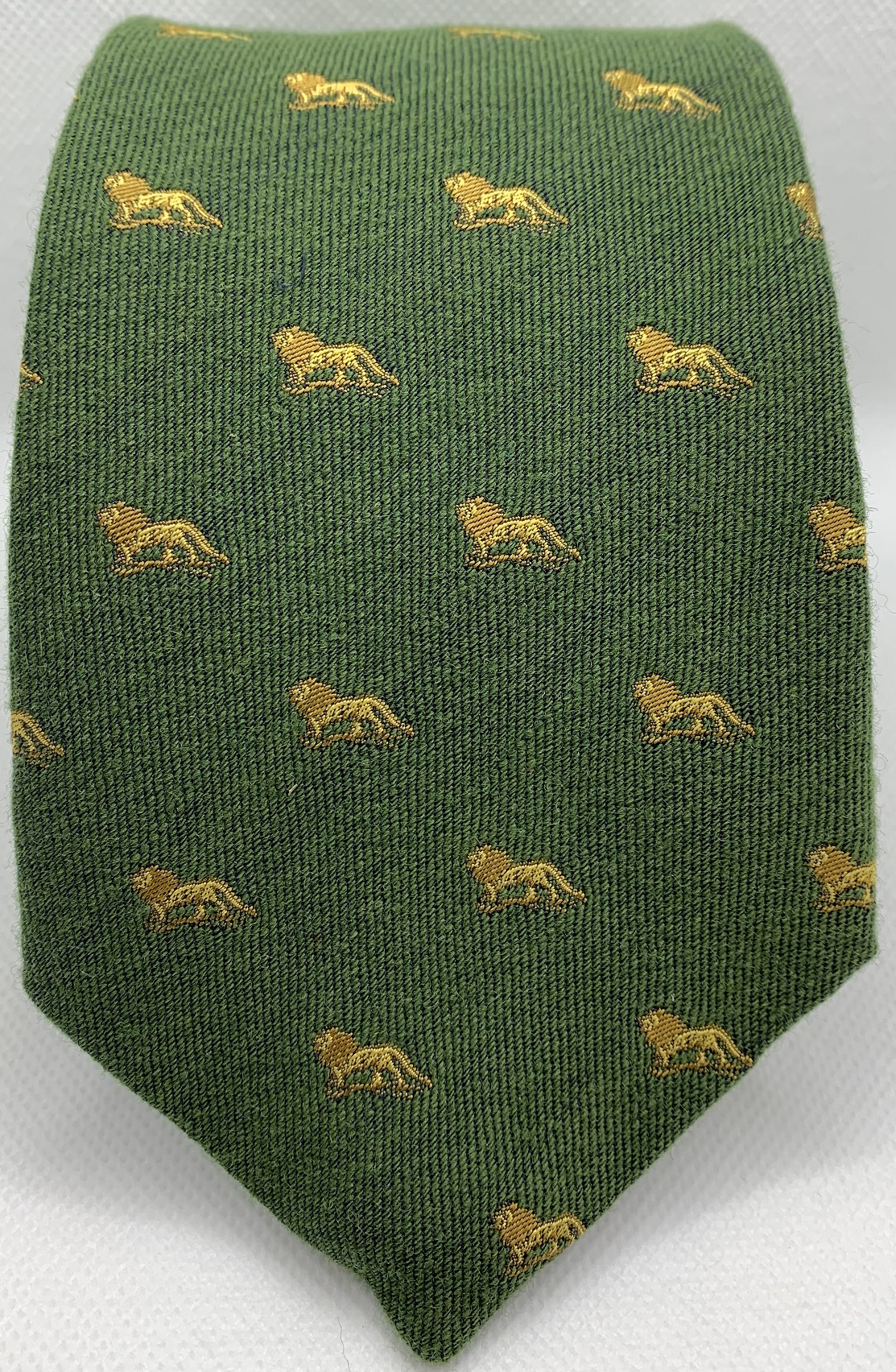The Dickson Lion Tie
December 2020

We are very pleased to announce the release of our exclusive John Dickson and Son ties
Starting with an ambition to produce an exquisite tie to reflect our heritage, we worked with a one of the finest tie manufacturers here in the UK to produce a woven luxury tie incorporating our lion logo which our customers could proudly wear not just on a shoot day. 
Made in a classic wool and silk jacquard, this bespoke tie is unique to John Dickson and Son, incorporating our lion logo in fine silk. The tie has been designed by us with style and practicality in mind for the discerning sportsman, being a perfect all season weight and in three colourways to match your gun case lining or sporting attire. The tie incorporates a hand finished silk tipping with the John Dickson and Son name and date of establishment, with the same material being used to create the tie loop – ensuring your tie remains in place no matter the weather or terrain.
The tie incorporates a hand finished silk tipping with the John Dickson and Son name and date of establishment, with the same material being used to create the tie loop – ensuring your tie remains in place no matter the weather or terrain.
The ties are available in classic loden (green), navy and burgundy - with the burgundy ties being
exclusively offered to Dickson Owners Club Members.
The ties retail for £80 and can be purchased through our shop, who you can contact here
Why do we have a lion as our logo?
You will notice that Dickson's has featured a lion on our gun case labels, cartridges and general merchandise for over 150 years now, but why would a small gunmakers in Edinburgh use a lion? Quite simply, we have a grand patron to thank for that.
Roualeyn George Gordon-Cumming was a Scottish traveller and sportsman, known as the "lion hunter" and a customer who would go on to shape Dickson's brand image. Born in Scotland in 1820, he was the second son of Sir William Gordon Gordon-Cumming, 2nd Baronet and Lady Eliza Maria Gordon-Cumming. From his early years he was distinguished by his passion for sport. He was educated at Eton, England, and at eighteen joined the East India Company's service as a cornet in the Madras Light Cavalry. The climate of India not suiting him, after two years he retired from the service and returned to Scotland. During his stay in the East he had laid the foundation of his collection of hunting trophies and specimens of natural history.

In 1843 he joined the Cape Mounted Rifles, but for the sake of absolute freedom, sold out at the end of the year and with an ox wagon and a few native followers set out for the interior of Africa. He hunted chiefly in Bechuanaland and the valley of the Limpopo River, regions then swarming with big game. The story of his exploits is vividly told in his book, Five Years of a Hunter's Life in the Far Interior of South Africa.

His favourite weapon was the 10 bore 2 groove rifle by Dickson that he had purchased from a friend in Africa, until it burst causing him great distress which prompted a letter to John Dickson in 1844 to order two new large game 2 groove rifles that 'you will send without an hours delay' to Africa so that he could continue on his hunting adventures.
We still have this letter today in our archive of historical documents.
 In 1848 he returned to England. His huge collection of hunting trophies was exhibited in London in 1851 at the Great Exhibition and was illustrated by a lecture delivered by Gordon-Cumming himself. The collection, known as The South Africa Museum, was afterwards exhibited in various parts of the United Kingdom and the larger trophies were then purchased by The American showman, P T Barnum, which were then completely lost when his Museum in New York was destroyed by fire in 1865.
In 1848 he returned to England. His huge collection of hunting trophies was exhibited in London in 1851 at the Great Exhibition and was illustrated by a lecture delivered by Gordon-Cumming himself. The collection, known as The South Africa Museum, was afterwards exhibited in various parts of the United Kingdom and the larger trophies were then purchased by The American showman, P T Barnum, which were then completely lost when his Museum in New York was destroyed by fire in 1865.
In 1858 Gordon-Cumming went to live at Fort Augustus, Scotland, on the Caledonian Canal, where the exhibition of his trophies attracted many visitors. Some of the collection went to Dickson's in Edinburgh, including a prowling lion in the reeds, which was dramatically placed in the window of the Princes Street shop (above). Remember that during this period, the vast majority of people in Edinburgh had never seen a real lion or even a sketch of one. A story often recounted is of children asking their parents to 'see the lion at Dicksons' after a trip to the Kirk (church) on a Sunday. Gordon-Cumming survived all his extraordinary African hunting escapades only to pass away in 1866, at just 46 years old, from getting a bad chill after swimming in Loch Ness.
We have to thank Roualeyn George Gordon-Cumming for being the inspiration behind the iconic image of the lion which has represented John Dickson and Son for over 150 years.